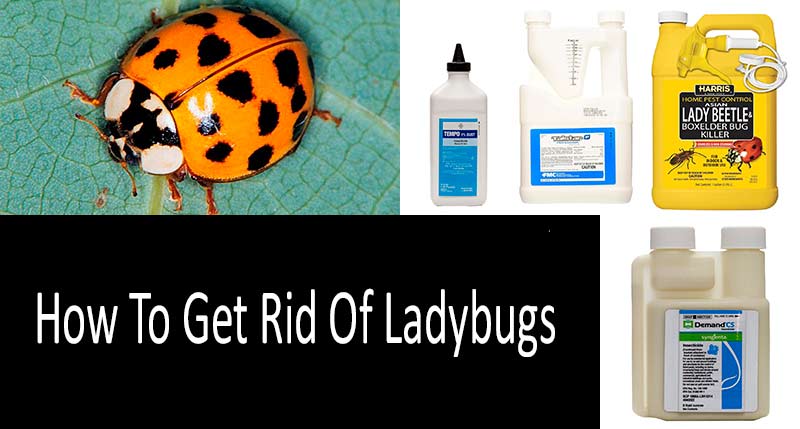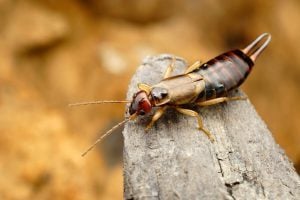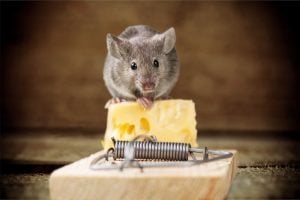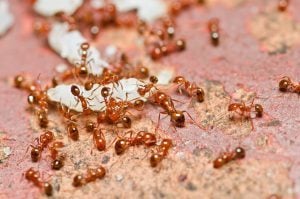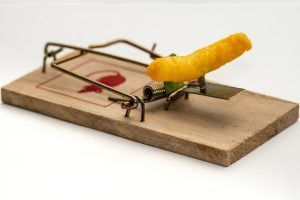These lovely beetles might be familiar to you from children’s books and T-shirts, you might have observed them on a window glass or as part of a picturesque garden. Apart from being so nice, ladybugs are mostly beneficial insects since they are predacious on such pests as mealy bugs and aphids. An adult ladybug is capable of killing up to 60 aphids on a daily basis, and an average of 2,500 ones over the course of the beetle’s lifetime. There is one point that needs to be clarified though. These insects are actually beetles, not bugs, but it’s customary for Americans to refer to them as ladybugs, and it is for this reason that we will use this name throughout the article.
The reality, however, is more nuanced: specific species of ladybugs may cause some degree of discomfort to household members and damage plants. So how to distinguish a beneficial ladybug from a pest? In this article, we will look at which ladybug species can be a nuisance, which ones can damage plants, and how to get rid of ladybugs efficiently, including using a ladybug trap. Note that in our research we have relied solely on scientists’ recommendations and findings in this area. Finally, we will examine pest control products available on the market, in order to make you aware of how to kill ladybugs the best way.
How to distinguish a beneficial ladybug from a pest?
The Asian lady beetle, which goes by the scientific name Harmonia axyridis, falls into the category of a nuisance insect once it is indoors. They can be detected on flat surfaces inside the house, such as walls and windows. These insects don’t reproduce indoors, nor do they carry diseases. This alone wouldn’t be a problem, if only these ladybugs did not produce an odor close to toxic and secrete a fluid when disturbed. As a result of this secretion, the fluid left behind them stains the surfaces they crawl around on.
How do they get in? The Asian lady beetles penetrate inside the building during the autumn in order to overwinter there, with buildings in some areas of the USA getting infested with these insects as soon as the weather gets cold. One should not be an expert to distinguish the Asian lady beetle: its length amounts to 1/3 inch and the shape of its body is oval. Normally, its color is deep orange, but there also could be variations towards yellowish or red. Like other ladybugs, this species has black spots on the back, but the Asian lady beetle has a distinguishing feature on its head — a black W-shaped spot.
According to scientific studies, the Asian lady beetles are enticed by sunny or illuminated surfaces which is why light-colored walls are like magnets for these insects. Where do they commonly accumulate? Any kind of protected location like an attic, typically situated on southwest sides of the building with enough sunlight penetrating inside. These beetles are most attracted by cracks in dilapidated furniture and structures.
Ladybugs damaging plants in your garden
It’s not only nuisance that could be caused by ladybugs, some species can damage plants in the garden. We will illustrate this point with some examples. One of them, the Mexican bean beetle, an orange-colored insect with sixteen black spots scattered around its back, feeds on beans, a beggarweed, mung, cowpea, clover, and soybeans. High infestation of soybeans by these insects can cause a complete defoliation. The Mexican bean beetle is most common in eastern regions of the United States, however, it can also be found in some western areas of the country.
The Mexican bean beetle overwinters under bushes and comes out in mid-May searching for beans. At first, they consume beans, but later in the summertime, these insects turn to soybeans. Annually, each female lay up to six hundred eggs underneath the leaves of plants that are hatched approximately in a week. Worst still, not only adult beetles, but their larvae attack bean plants as well, including pods and leaves. The most serious damage is caused to the leaves, and it is where the larvae turn out to be more destructive pests than the adults. Devouring the underside of the leaves, they eventually dehydrate the upper side of the foliage.
Another species of ladybugs feeds on the foliage of pumpkins, cucumbers and squashes, for that reason, it is known under the name of the Squash beetle. This insect is twice larger than the Mexican bean beetle but has 14 black spots, two black spots less than the Mexican bean beetle. Its larva has big forked spines across the body which is normally orange-colored. The Squash beetles are most abundant in the Eastern United States. Both adults and larvae cause cosmetic damage to plants.
In addition to their typical food, both predator and plant feeding species of ladybugs feed on flower nectar.
How To Get Rid Of Ladybugs Naturally?
The article published by Iowa State University Extension and Outreach mentions a long-term solution involving planting trees in the southwestern area around the building. Such a natural shield is intended to create shade protecting this section of land against the sunlight, something that ladybugs would apparently dislike.
A natural way to control the Mexican bean beetle and squash beetle in fields and gardens is to use parasitoid wasps Pediobius foveolatus. They should be released in the infected area annually as they die every winter. These wasps attack ladybugs’ larvae only, that is why the timing is crucial. As Louis Nottingham and Tom Kuhar at Department of Entomology, Virginia Tech, put it:: “Ideally, wasps should be released at both one and two weeks after first instar beetles are discovered in beans… It is also important not to release wasps when it is raining or cold, as they are not well adapted to these conditions.” Pediobius foveolatus are commercially available.
Another wasp parasite of a ladybug, Dinocampus coccinellae, turns its prey into a zombie, an article by Nicholas Weiler published on Science Magazine says.. The way the wasp gains control over a ladybug looks rather like a macabre story. Namely, a wasp infects the beetle’s brain with a virus to paralyze it, then lays an egg inside the insect converting it into an involuntary babysitter. After the egg is hatched, the larva bursts from the belly of the poor insect and creates a cocoon between the legs of the still alive ladybug.
Neem is recommended by scientists at the University of Maryland Extension as another solution in eradicating crop infestation by squash beetles. However, there is a common perception that neem is of low toxicity to lady beetles. Neem oil was discovered in the neem tree in India and has been used in gardening a great while. The stuff can be poured on the soil or sprayed on plants. The leaf-sucking beetles get a dose of the substance with the rest of the fluid in the leaf. Neem is also good at repelling insects. Neem oil is considered non-toxic, nevertheless, some substances can cause irritation of the skin and eyes, therefore take care to wear goggles and take other protective measures.
Sprinkle diatomaceous earth into gaps and cracks in your house or along the perimeter of the garden to kill ladybugs. This substance, according to the National Pesticide Information Center, is made from the fossilized remains of diatoms, ensures a natural protection from many species of insects. It is safe and is not toxic to humans and animals. Typically, diatomaceous earth is commercially available in dust, but is produced in pressurized liquids, too. The stuff kills insects by drying them out and absorbing their oils and fats.
Below you will find some tips on how to repel ladybugs without killing them. First, consider using camphor which is recommended by the Agricultural Research Service at the U.S. Department of Agriculture as an efficient way to repel Asian lady beetles as they try penetrating inside the house to overwinter there. Add some camphor and menthol to a bottle with water. Mix these substances and spray the liquid in the areas where these beetle hide. It is scientifically proven that a strong odor repels ladybugs, so you will safely get rid of these insects. Apart from camphor, ladybugs hate the smell of citrus. You may easily make a spray with the use of orange essential oil which commercially available.
The main advantage of natural products is that they are of low toxicity to humans or are entirely nontoxic, and are allowed in organic gardening. But there are some drawbacks as well. First, their effect lasts only for a short period of time; second, repeated applications are normally needed to eliminate new insects. The third disadvantage is that natural products don’t produce an immediate result, and the fourth one is that they are most efficient in killing young pests.
Ladybug Traps
Remember that the Asian lady beetle is a beneficial insect when they dwell in trees, fields or gardens, and that is why killing them when detected indoors would not be the smartest move. Instead, use a so-called light traps to collect and remove ladybugs from the house. Such devices are available on the market or can be successfully handmade. According to scientists at the Ohio State University, the light trap has proven to be 70% effective at catching Asian lady beetles.
Trap design typically includes a lamp and bulbs, the latter are preferable to be black light or incandescent light ones. Another required component of the device is a funnel to move your capture into one gallon jugs, from where the ladybugs could be easily released outdoors underneath shrubs or trees.
A cardboard box with a sticky surface inside can also serve as a ladybug trap. Its commercial options are offered with a pheromone attracting beetles since they find each other using these scents. Meanwhile, Donald R. Lewis, an extension entomologist at the Iowa State University, says that scientific studies haven’t shown that the insects respond to such a solution. Below, we have reviewed a commercial trap available.
How To Repel Ladybugs From Your House?
Preventing ladybugs from penetrating into your house should be a priority task for those willing to get rid of ladybugs inside the house, Jeffrey Hahn, an extension entomologist at the University of Minnesota, claims.. He finds it an effective measure to seal openings and cracks outside the building even the ones that don’t exceed an eighth of an inch. Such a tiny gap would be enough to serve as a point of access for ladybugs. What should be sealed is all gaps discovered around windows and doors, between bricks, as well as holes for TV wires and other utility. For this purpose, use spray foam or caulk. Complete all repair works no later than by late September since this measure only makes sense as a prevention of the infestation.
Once they are inside, the surefire way to get rid of ladybugs is to vacuum them. The scientists at the Iowa State University Extension and Outreach also advise using a vacuum cleaner as a trap by placing a tissue inside the device, between the hose and the bag. Sweeping the insects with a broom is not recommended as the fluid they release is likely to stain the floor and carpeting. Note that vacuuming should be conducted on a regular basis, otherwise no positive result will follow.
Scientists believe that using insecticides indoors to eliminate ladybug infestation does not produce results: Insecticides are not recommended for use indoors. The main reason is that insecticides labeled for use indoors are not very effective, and you will have to vacuum the dead ones anyway, Scientists at the University of Kentucky recommend applying insecticides at home, describing this approach as being unproductive and even damaging because insecticides leave stains on walls and carpets. Preventive measures is a more preferable approach ensuring the reduction in the number of ladybugs for years to come.
This involves applying insecticides to building exteriors, a so called Exterior Barrier Treatment. Sealing gaps in manual way, as we have described above, does not guarantee the blocking of every point of access for ladybugs. There will alway be numerous cracks left unnoticed, particularly when it comes to multi-story houses. In this case, the solution lies in treating building exteriors with insecticides, which could be carried out by the owner of the house or hired pest control professionals. This measure should be taken in the autumn, not later than at the end of September, when ladybugs are most active in their endeavor to penetrate inside the building.
Insecticides which could be found in the arsenal of professionals include products containing the following active ingredients: lambda cyhalothrin, deltamethrin, bifenthrin and cyfluthrin. They should be sprayed around such areas as eaves, windows and doors. Consider a cost-effective option of buying concentrates since when diluted with water the substance will cover much larger area.
To repel ladybugs without killing, use ammonia. What you need is to soak a tissue in it and wipe all surfaces inside the house infested with ladybugs. Note that ammonia is classified as dangerous for the environment since it can be highly toxic to fish.
How To Kill Ladybugs In The Garden
Scientists at the University of Maryland Extension suggest using botanical insecticides, ie derived from plants, to deal with mass ladybug infestations of crops and gardens. This primarily refers to the application of pyrethrum, which affects the nervous systems of beetles and disrupts its normal functioning.
Hussein Sanchez-Arroyo, University of Florida, considers pesticides to be a reliable and efficient way to control a large population of plant feeding ladybugs, in particular, Mexican bean beetle adults and their larvae. He stresses the importance of correct scheduling the application of pesticides and choosing a proper product. Not all products, Mr. Sanchez-Arroyo notes, ensure a durable protection against the Mexican bean beetle.
There are also some tips to be taken into account. To eliminate shelters where Mexican bean beetles could overwinter in your garden, get rid of all debris after harvest. Before planting, till the soil. Pick adult beetles and their larvae and drop them in a jar with oil or soapy water. To find eggs, look at the bottom side of leaves on the plants.
How To Get Rid Of Ladybugs: Comparison Chart
Effectiveness Scale: 1 being the least, 10 being the most effective.
| Method | Advantage | Disadvantage |
| Sealing openings / cracks outside the building Grade: 10 | Safe; does not require additional spending; simultaneous minor repairs of the house. | It’s impossible to detect and seal all openings and gaps; labor-consuming. |
| Planting trees shading the area Grade: 8 | Environmentally friendly solution; diversify the landscape. | Block sunlight to people as well; labor-consuming; does not guarantee positive result. |
| Vacuuming Grade: 10 | Safe and effective way to get rid of ladybugs; can be used as a trap. | Needs to be conducted regularly; time-consuming. |
| Light traps Grade: 8 | Scientifically proven to be 70% effective; can be homemade; save beneficial ladybugs for your garden; components are easily obtained; portable. | Less productive when it’s cold, windy or when there is bright moonlight. |
| Traps with scent lures Grade: 6 | Save beneficial ladybugs for your garden; portable. | Effectiveness has not been scientifically established; pheromone scent attract other insects from outside the house. |
| Using predator wasps Grade: 10 | Environmentally friendly solution; wasps are beneficial insects; doesn’t require human participation. | Wasps Pediobius foveolatus attack larvae only; ineffective when it is raining or cold. |
| Insecticides (lambda cyhalothrin, deltamethrin, bifenthrin and cyfluthrin) Grade: 9 | Kills ladybugs outside the house, in a field or in a garden; brings quick result. | Not effective when applied indoors; can pose a risk to human health. |
| ammonia Grade: 7 | Repels, not kills; has strong odor; cheap solution. | Dangerous for the environment. |
| neem oil Grade: 8 | Safe for humans and pets, compatible with organic gardening; kills and repels. | Low toxicity to lady beetles. |
| diatomaceous earth Grade: 10 | Safe for humans and pets, environmentally friendly; kills without poisons. | Sprinkling dust inside the house may be not an attractive solution for the homeowner. |
| camphor Grade: 8 | Scientifically proven efficiency; repels instead of killing beneficial insects; the camphor-based spray can be easily homemade. | Has a strong odor. |
| citrus Grade: 6 | Has an odor attractive to humans; repels instead of killing beneficial insects; can be easily homemade. | Efficient only in a concentrated form. |
TOP 7 Products Killing Ladybugs
Let’s have a look at high-demand products which could be used for ladybugs control both indoors and outdoors. There is a relatively new ladybug trap which is easy-to-use and safe for humans and pets. In case you need strong and immediate effects, consider insecticides. Here are insecticides containing the ingredients most popular with pest control operators. The spray based on deltamethrin is designed to kill ladybugs, a concentrate containing lambda-cyhalothrin kills insects in a less than half an hour, the bifenthrin-based product kills over seventy species of insects and is recommended by the manufacturer for ladybug control. The product with an active ingredient cyfluthrin is available in dust and has gained almost an absolute approval from consumers. While most of the manufacturers haven’t outlined Asian lady beetles as a primary target of their insecticides, we have included these products in our review since they were recommended by scientists at the University of Kentucky.
Harris Asian Lady Beetle & Box Elder Killer, Gallon Spray
The product has an active ingredient deltamethrin which falls into the category of pyrethroids similar to natural pyrethrins. This substance used in pest control is highly popular in the United States and is approved as being safe for humans, but still toxic when applied incorrectly. The product does not have an odor and does not stain tissues, and is approved by EPA both for use indoors and outdoors.
The manufacturer promises a long residual effect lasting up to several weeks after the product was first applied. The feedback shows that, from the consumers’ experience, two applications are enough to eliminate the heaviest infestation. Price: Check the current price
The Ladybug Buster
This is one of the commercially available traps which targets the Asian lady beetle. The device should be attached to windows and has room for two thousand ladybugs. It is a safe way to get rid of ladybugs and what is more it’s time-consuming. Once installed, the device does not require human participation to function.
The insects are supposed to be attracted inside by lures supplied with the trap. Well, it’s noteworthy the the consumers feedback on has proved comments made by Donald R. Lewis from the Iowa State University. It seems that using lures probably is not the best idea, however, time should be allowed to assess the product’s effectiveness.
Price: Check the current price
Demand CS Insecticide-8 oz.
The product with an active ingredient lambda-cyhalothrin kills a number of insects in a less than half an hour after application. While it is not labeled for Asian lady beetles, some consumers claim that it does work on these insects. Apart from that, this product was recommended for Asian beetles control by scientists at the University of Kentucky.
The manufacturer’s instruction says that Demand CS has a long-term effect stretching for several months. From customers’ experience, however, the product’s residual lasts over the course of one or two months. One bottle of the insecticide can make up to 10 gallons for 1000 sq. feet of the area.
The insecticide is designed to a greater extent for using indoors and around buildings, including hospitals, however, it can also be applied outdoors on lawns, ornamental trees, and shrubs. Note that the product must not be applied to golf course turf, nor can it be used in NY or CT where the distribution of this insecticide is restricted.
Price: Check the current price
Talstar Pro 96 ounce (3/4 gallon) jug
Talstar Pro with an active ingredient bifenthrin (7.9%), which is a widely used and approved by professionals, is designed to kill 75 species of pests, including Asian lady beetles. It can be applied both inside and outside, and is permitted to be used in areas with eatable plants. Its residual effect lasts for more than three months following the first application, with the stuff effectively killing insects during this period.
As well as Demand CS, the product is odorless and does not stain surfaces. The manufacturer points out that the liquid does not cause irritation of the skin, however, don’t forget to read an instruction on how to properly handle this kind of insecticide.
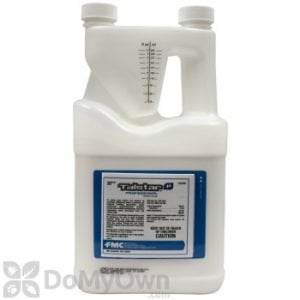
A one gallon treatment covers an area of about 1000 sq. feet. Or, if to treat a moderate-sized house, one gallon will be enough for three years of application. We here at SPI recommend reading instructions carefully and doing the math before applying it.
Price: Check the current price
Suspend Sc Insecticide -(1 Pint) Flea Tick Roaches Ant Professional Pest Control Product
Suspend Sc is said to control 50 nuisance pests, and scientists at the University of Kentucky suggested this product as a good option to eliminate the Asian lady beetle infestation. It would be especially useful for indoor ladybug control as the stuff works well on porous surfaces. Suspend Sc is also intended for outdoor application, specifically on turfs and lawns.
Its residual is as long-lasting as that of the previous products, that is why it can’t be delivered to NY, AK, CT. The active ingredient is deltamethrin concentrated in micro-crystals, which is why the substance is not absorbed into porous materials, rather remains on the surface.
Price: Check the current price
Tempo Dust Insecticide BA1011
This insecticide with an active ingredient cyfluthrin, It can be safely used indoors, and will still be effective even if it gets damp. This stuff kills a large number of insect species, and is recommended by scientists at the University of Kentucky for Asian lady beetles control.
Unlike the previous products in this review that are concentrated liquids, this one is available in the form of dust. For this reason, some of the consumers on advise wearing a mask during the application process of the insecticide.
The insecticide is produced by Bayer, the company which has positioned itself favorably on pest control market. Note that Tempo cannot be shipped to NY, SC, CA, CT.
Price: Check the current price
Tempo Ultra SC 240 ML (8.12 oz) Multi Use Pest Control Insecticide
Another product made by Bayer and based on cyfluthrin is available in the form of liquid. Tempo Ultra, a concentrate making up to some 30 gallons, can be used both indoors, primarily applied to cracks and crevices, and outdoors to control a variety of insects, including turf and ornamental ones. Scientists at the University of Kentucky advise applying the stuff when dealing with the infestation of Asian lady beetles. The manufacturer promises that the product is capable to cover 30,000 square feet outdoors.

As always carefully read the manufacturer’s instructions before application, and be sure to wear the appropriate safety gear. This product is a powerful insecticide and works on a variety of bugs.
Price: Check the current price

